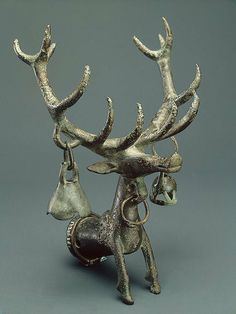 | ||
The Koban culture (ca. 1100 to 400 BC) is a late Bronze Age and Iron Age culture of the northern and central Caucasus. It is preceded by the Colchian culture of the western Caucasus and the Kharachoi culture further east.
It is named after the village of Koban, Northern Ossetia, where in 1869 battle-axes, daggers, decorative items and other objects were discovered in a kurgan. Later, further sites were uncovered in the central Caucasus.

Many, such as Amjad Jaimoukha, believe the Koban culture was primarily Nakh.
The most well-studied site was on the outskirts of Serzhen-Yurt (in modern Chechnya), which was a major center from around 11th century BCE to around the 7th century BCE.

The remains include dwellings, cobble bridges, altars, iron objects, bones, and clay and stone objects. There were sickles and stone grain grinders. Grains that were grown included wheat, rye and barley. Cattle, sheep, goats, donkeys, pigs and horses were kept. There were shops, where artisans worked on and sold pottery, stone-casting, bone-carving, and stone-carving. There is evidence of an advanced stage of metallurgy. There was differentiation of professionals organized within clans.

Amjad Jaimoukha argues that while all these cultures probably were made by people included among the genetic ancestors of the Northern Caucasian Nakh (i.e. Chechens and Ingush), it was either the Koban or Kharachoi culture that was the first culture made by the cultural and linguistic ancestors of the Chechens (meaning the Chechens first arrived in their homeland 3000–4000 years ago). Johanna Nichols has written that "There is fairly seamless archeological continuity for the last 8000 years or more in central Daghestan, suggesting that the Nakh-Daghestanian language family is long indigenous."
Jaimoukha postulates that the end of the Koban culture was brought about by Scythian invasions.
